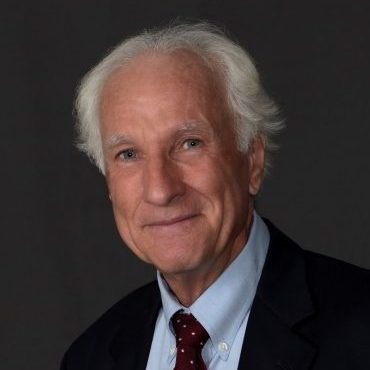 I recently delivered a keynote address at a special session of the AUTM Annual Meeting, where the Advanced Medical Technology Association (AdvaMed) released its new University Technology Transfer Best Practices Guide. Following is a transcript of that speech.
I recently delivered a keynote address at a special session of the AUTM Annual Meeting, where the Advanced Medical Technology Association (AdvaMed) released its new University Technology Transfer Best Practices Guide. Following is a transcript of that speech.
To spare you all a power point presentation, I thought I’d share some thoughts today about how and why our tech transfer system was created and the importance of practitioners continually developing best practices to maintain it.
Woody Allen said that half of life is showing up. Perhaps the other half is working with people who give you the opportunity to show what you can do.
In the late 1970s, I was a research assistant on a Senate Judiciary Subcommittee whose chairman had just lost his re-election bid. Our new chairman was Senator Birch Bayh of Indiana. I’m not from the state, had no connection with his office, and a new chair has the prerogative of bringing in their own people. Instead, Senator Bayh decided to keep most of us while adding some senior staffers to run things.
Unearthing the Problem
One day, our General Counsel asked if I wanted to sit in on a meeting with Purdue University. Senator Bayh graduated from Purdue, so when they asked for help, it got our undivided attention.
Purdue came in with representatives from the Wisconsin Alumni Research Foundation (WARF) and the patent counsel from the National Institutes of Health (NIH). Purdue told us that they had made several potentially important inventions with federal support, which could be taken away by the funding agency under the existing patent policies. Thus, they would likely never be developed. That meant the fruits of taxpayer-supported research were being wasted at a time when the U.S. economy was staggering from challenges by Japan and Germany.
After the meeting, I was asked to look into the issue and soon discovered that this was a serious problem. Under the existing policies, universities could petition to retain patent rights for inventions made with federal support, but the default position was that discoveries would be taken by the government and made available through non-exclusive licenses. Very few were commercialized.
I discovered that 28,000 inventions were wasting away on the agencies’ shelves and fewer than 5% would ever be licensed. We also learned that potentially important medical discoveries were languishing at the NIH because the incentives of patent ownership were being destroyed under the current policies. Not a single new drug had been developed when the government took patent rights away from a grantee in order to make them available to any and all through non-exclusive licenses. To continue down that path just didn’t make any sense.
Support for the Solution
We found out that Senator Dole had also met with a university delegation and shared our concerns, so we decided to work together, and soon introduced “The University and Small Business Patent Procedures Act”—nicknamed “Bayh-Dole.”
Shortly afterwards, the Society of University Patent Administrators (AUTM’s previous name) invited our General Counsel to speak at their Annual Meeting. He readily accepted. A week before the event, he hurt his back and asked me to fill in. I was terrified but agree to go.
I flew to Atlanta and spoke before the largest gathering they had ever had—50 attendees who comfortably fit into one room. But I’ll never forget how kind they were to a scared kid. I returned with the good news that Bayh-Dole had their strong support.
Getting the bill passed was quite an adventure. The Carter administration, Ralph Nader, Admiral Hyman Rickover (the father of the nuclear navy), and many bureaucrats were opposed to us for reasons ranging from a disdain for patents to resenting having the management of government-funded technologies taken from Washington and given to the inventing institutions.
After a long series of adventures, we got the bill passed just as Congress went out of session. President Carter signed it into law on the very last day before it could be pocket vetoed. Soon afterwards, what became the Bayh-Dole miracle began; the legislation helped jolt our economy out of the doldrums, introducing a golden age of American innovation.
The Key: Best Practices
So, why did Bayh-Dole work? It was because we founded it on a couple of key principles:
- That inventions are most effectively managed by those creating them and that strong patent rights are critical for commercialization;
- That inventions are reported in a timely manner;
- That preferences in licensing are given to small companies and those who will manufacture in the U.S.;
- That inventions are not being licensed by dominant companies to prevent competition; and
- That royalties are shared with academic inventors and invested into additional research as an incentive to change the culture on campus.
After that, bureaucracy should get out of the way.
But, in 1980, when Bayh-Dole passed, there were only a handful of universities experienced in tech transfer, and our law allowed every nonprofit organization to own the inventions they made with government support. How could that possibly work?
We relied on AUTM to develop and teach best practices, and that’s exactly what happened. In a remarkably short time, universities and nonprofit research institutions set up technology transfer offices built around shared best practices. Today, we see a significant number of attendees from around the world at this meeting because one of our core principles is a willingness to work together to constantly upgrade the profession.
But there’s another potential stumbling block in our system. Universities and industry live in parallel universes. It wasn’t always obvious that forming public and private sector R&D partnerships was all that interesting or important. Indeed, not a single company testified at the Bayh-Dole hearings expressing any interest in working with universities as a source of important new technologies.
That changed with the biotech revolution, where suddenly an entirely new industry sprang up around universities driven by spin-out companies. Today, federally-funded research is widely recognized as one of the most important strategic advantages of the United States. Before Bayh-Dole, we had lost the lead in many of the industries of the future and were expected to lose many more. Today, the United States leads in every core technology field and our economy is reaping the rewards.
But what’s often lost is who are the real heroes of our system. I’d argue that they are not in the public sector, but in the entrepreneurial companies that invest the time, money, and sweat needed to take a university or federal lab invention to market. The odds against success are long and, unlike in the public sector, when projects fail, companies go under, venture capitalists lose their investments, and people are put out of work.
Which gets me to my final point. In our system, the government doesn’t mandate best practices. That’s up to us. Yet all too often, rather than having frank discussions on where the tensions lie and how to resolve them, we criticize those in the other culture for just not understanding how things really work.
I’m very excited that today we are unveiling an important new best practices guide created from extensive input from industry and academia on making our alliances even more effective. Because of the enormous amounts of taxpayer dollars invested each year in federally-funded R&D, either we will continue to improve our system, or, at some point, the long arm of government will do it for us. If that ever happens, it won’t bode well for the continuation of decentralized technology management, free from bureaucratic micromanagement.
Memorize this Mantra
So, in closing, let me share a best practices mantra that’s stuck with me for many years. When I ran the Office of Technology Management at the Department of Commerce (which oversaw Bayh-Dole’s implementation and the development of federal technology transfer policy), we had a new Assistant Secretary who wanted to learn more about the subject.
It might surprise you to know that, before Bayh-Dole, the Massachusetts Institute of Technology (MIT) was not particularly good at licensing, so they asked Niels Reimers at Stanford (Niels was one of the founding fathers of AUTM) to take a sabbatical to restructure their office. Niels recommended that John Preston take over when he returned to Stanford. I invited John down to brief the Assistant Secretary.
As he was finishing, John gave us a handout that encapsulated his deal-making philosophy. It said:
Passion is the most important ingredient for successful commercialization. The inventor, management, and the partnering company all must share the passion for success. If any party does not, the deal will fail.
Then he handed us a list of the killers of passion:
- Greed
- Destructive Criticism
- Lawyers and Committees
- Bureaucracy and Red Tape
As soon as we’d thanked him and John had left, our Assistant Secretary went to her desk, pulled out some tape, and posted that list to her office door. Anyone who came to see her couldn’t miss it. That had a wonderful effect on some of our government lawyers, who quickly understood that they’d better find ways to make things happen, rather than simply saying no to every new idea.
So, we made a handout of John’s list for you. It’s guaranteed to fit on any office door—but you have to supply the scotch tape.
Here’s one final thought. Under Bayh-Dole, universities were made stewards of the public interest to effectively manage the results of taxpayer-funded R&D. Stewardship is a biblical concept. It means treating the property of others even better than you would treat your own. A sacred trust has been given to you. Never take that for granted.
Thank you very much.
Image Source: Deposit Photos
Image ID: 13043324
Copyright: buchachon_photo

![[IPWatchdog Logo]](https://ipwatchdog.com/wp-content/themes/IPWatchdog%20-%202023/assets/images/temp/logo-small@2x.png)

![[Advertisement]](https://ipwatchdog.com/wp-content/uploads/2024/04/UnitedLex-May-2-2024-sidebar-700x500-1.jpg)
![[Advertisement]](https://ipwatchdog.com/wp-content/uploads/2024/04/Artificial-Intelligence-2024-REPLAY-sidebar-700x500-corrected.jpg)
![[Advertisement]](https://ipwatchdog.com/wp-content/uploads/2024/04/Patent-Litigation-Masters-2024-sidebar-700x500-1.jpg)

![[Advertisement]](https://ipwatchdog.com/wp-content/uploads/2021/12/WEBINAR-336-x-280-px.png)
![[Advertisement]](https://ipwatchdog.com/wp-content/uploads/2021/12/2021-Patent-Practice-on-Demand-recorded-Feb-2021-336-x-280.jpg)
![[Advertisement]](https://ipwatchdog.com/wp-content/uploads/2021/12/Ad-4-The-Invent-Patent-System™.png)






Join the Discussion
4 comments so far.
PTO-Indentured
February 20, 2019 10:58 amNotice — for posting on doors of all courts and those in Congress wherein our current stewards of the fate of U.S. patents preside:
Stewardship is a biblical concept.
It means treating the property of others even better than you would treat your own.
Such stewardship is a sacred trust has been given to you.
Never take that for granted.
* * *
When in doubt: weigh the principles that guided the era of Bayh-Dole successes — against those that have been proven since to foster the passion killers of:
Greed
Destructive Criticism
Lawyers and Committees
Bureaucracy and Red Tape
Jeff Lindsay
February 19, 2019 09:23 pmWonderful story, Joseph! How exciting to have been involved in bringing about one of the most successful and important pieces of legislation in the past 50 years. What a difference that has made!
Dan Hanson
February 19, 2019 12:58 pmLet me put in a word in favor of passion by many of the USPTO examiners. I have had the good fortune to encounter several hard-working folks who take their jobs very seriously and give every claimed invention a fair shake. They help inventors get better-quality patents. They have a passion for their work and dealing with them is a delight.
The word “bureaucrat” connotes a person who gets in the way, who doesn’t do the job well, who cuts corners, who loves the thrill of exercising power, who mucks things up sometimes without meaning to do so. Those examiners who have a passion for their work do not operate in these ways; so they ought not to be considered to be “bureaucrats.”
Anon
February 19, 2019 10:59 amThank you for the interesting article (and your work leading to the content of the article)!